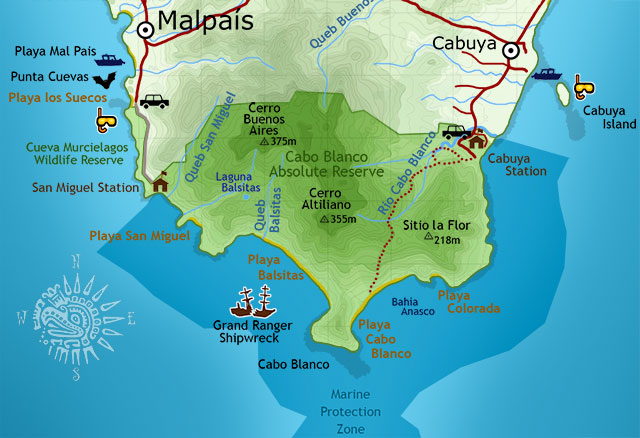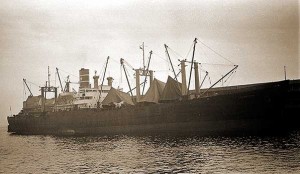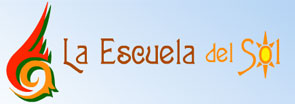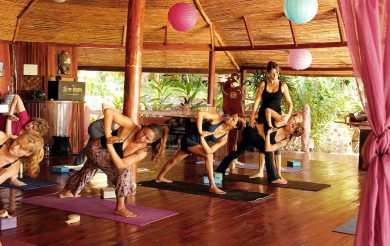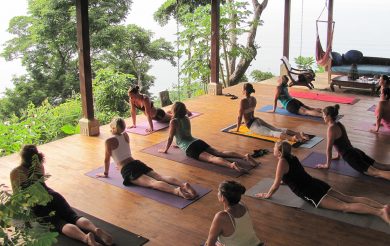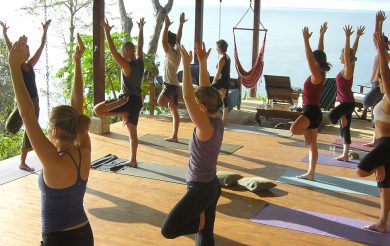- Home
- Accommodation
- Activities
- Area Info
- Maps
- Photo Galleries
- Real Estate
- Travel
Cabo Blanco National Reserve and Park
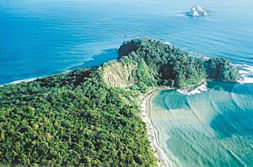 Cabo Blanco is a popular tourist destination for tourists who visit Montezuma and Santa Teresa. They are naturally drawn to the largest national park in the area.
Cabo Blanco is a popular tourist destination for tourists who visit Montezuma and Santa Teresa. They are naturally drawn to the largest national park in the area.
On the Cabo Blanco map below you can see two ranger stations. Currently, you can only access the park from the Cabuya/Montezuma side. The Mal Pais side is for park guards only, although there’s a great parking lot at Cueva Murcielago Wildlife Reserve and a beautiful beach there (Playa los Suecos).
Two basic ways to enjoy the park:
Short Trail Loop: The first is to park at the ranger station on the Cabuya side and then hike around the loop across trails and bridges through the canopy. Most of this has grown back within the last 50 years or so since Cabo Blanco was founded. There are signs detailing the types of tree, etc.
Beach Hike: The hike to Playa Cabo Blanco take around two hours, and is quite strenuous. You’ll climb several hills in tropical conditions, without much airflow. Luckily the jungle canopy provides good shade. The beach isn’t the prettiest, but it’s remote and few people make it this far. It’s fun to explore around the edges of the beach and see a truly remote site. This hike isn’t for the weak… it’ll be a total of four hours of serious hiking to make it there and back.
If your goal is to see animals, you’ll want to be the first people on the trail in the morning at 8am.
Basic Details about Cabo Blanco:
Size: 1270 Hectares (3138 acres) + 1788 Ha (4420 acres) Marine Reserve
Founded: October 21, 1963
Hours: Wednesday through Sunday, 8am – 4pm
Admission Price: $10
Cabo Blanco Phone Number: +506 2642-0093
Email: [email protected]
Map of Cabo Blanco National Park
Click here to see a bigger better Cabo Blanco Park Map
San Miguel Research Station:
Cabo Blanco Park’s San Miguel Biological Research Station The San Miguel Biological Station was developed to support and promote research and environmental education. The site has well protected tropical marine and dry tropical forest habitats. The facilities include laboratories, classrooms and a reference library. Bunk-bed lodging with electricity, shared rooms and baths are available for groups of up to 30 people. For more information call (+506) 2645-5277 or 2645-5890. The station is available for students, researchers, and any group interested in learning about or experiencing these diverse, fascinating and increasingly threatened ecosystems.
Shipwrecks in or near the park
There are three known wrecks very near to Cabo Blanco and two of them are inside the protected reserve. The biggest and best is the “Grand Ranger”, originally commissioned as the U.S.S. Typhoon, a World War II ship transport. You can read details about it in an article I wrote here:Grand Ranger Shipwreck off Cabo Blanco, Costa Rica
The second wreck within the park is a 150 year old boat of unknown name, found off Playa Cabo Blanco.
The third is the Caroline Star, which is the only one of the three that you can visit, since it’s outside of the park’s forbidden waters, located just north of Cabuya Island.
More Details about Cabo Blanco National Park:
Cabo Blanco Reserva Absoluta was the first National Park/Reserve in Costa Rica. Since the mid 1960’s, at which time it was mostly cattle land, Cabo Blanco has been a “Reserva Absoluta” meaning that no people other than the park’s stewards, were allowed inside, which has given the park over 40 years to grow back.
Most of the park is thus secondary growth, and was seeded by birds, bats, and other natural means, although early conservationists in the Montezuma area had also planted thousands of trees in the park to help it re-grow.
Most of the park is still protected, but there is an overland trail to the remote beach of Playa Cabo Blanco. Park at the visitor’s entrance, which is south of Cabuya, and pay at the ranger station. If you walk quickly, it will take around two hours to get to Playa Cabo Blanco. There’s also a small loop trail that you can take, which crosses some streams. Many tree species are marked, with interesting details shown.
This is a tough hike, in that you will be in dense jungle without much breeze, and it’s hot and humid. You will also make an elevation gain of over 200 meters (660 feet) during the hike, which is equivalent to climbing to the top of the Space Needle in Seattle. There are a few very muddy spots during the wet season, so bring hiking boots. When you get to the beach, there’s fresh water to drink, and a beach to swim at.
Cabo Blanco’s got a very famous beach, but for sheer beauty, Playa Cabo Blanco is not as impressive as the white sand beaches of Santa Teresa, or even Playa Los Cedros in Montezuma, but it’s remote and the only people there are the few who are willing to make this long hike.
Many people want to know if they will see animals in the park. When I did the hike, I didn’t see anything at all… not even a bird, squirrel or monkey, although certainly the park has more animals than any other place in the peninsula. Other people have reported seeing lots of animals, especially if you’re the first one on the trail in the morning. If you do see an animal, hold still and be quiet, and sometimes they will walk up very close to you. Some animals, such as coatis (pizotes) are either very brave or very blind, because they will often get within 15-20 feet before noticing you and running away.
Cabo Blanco is the area’s best hope for saving the wildlife. The park had the last group of peccaries, which for decades were only seen inside the park, but are now sometimes seen even in Delicias/Montezuma. There is at least one Jaguar known to be in the park, and pumas as well. Animals that have gone extinct here include both the Scarlet and Great Green Macaws, Toucans, Tapirs, Spider Monkeys, Three-toed Sloth, and Giant Anteaters.
Great Stuff

Clandestina Restaurant
My new favorite restaurant, Clandestina is not to be missed by food lovers staying anywhere near to Montezuma. Established in March 2015, Clandestina is the new kid on the block. The Oregon/Tico collaboration is a winner among locals and travelers alike, with artisan craft beers, made onsite by Butterfly Brewing Co. and delicious, exciting […]

